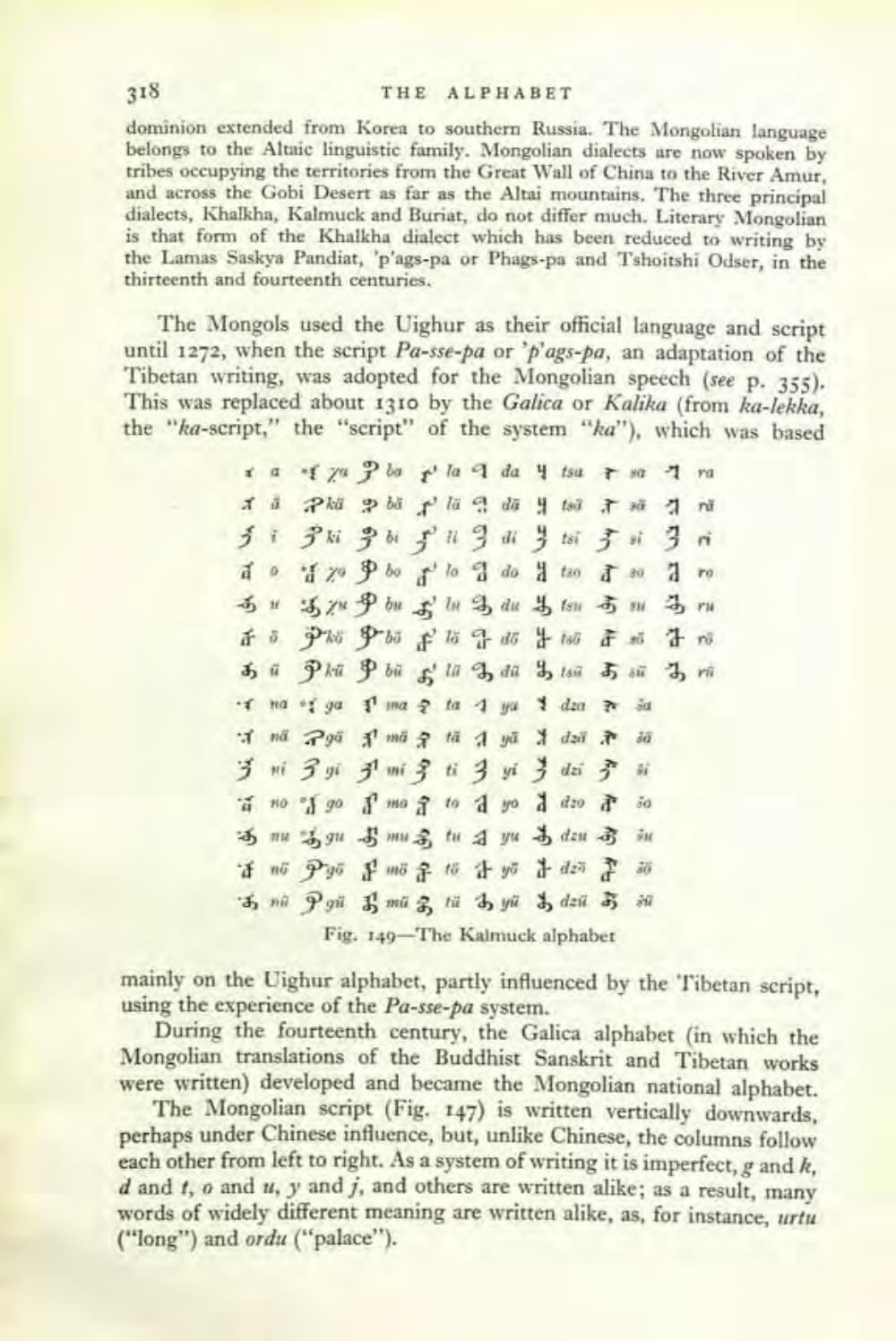________________
318
THE ALPHABET
dominion extended from Korea to southern Russia. The Mongolian language belongs to the Altaic linguistic family. Mongolian dialects are now spoken by tribes occupying the territories from the Great Wall of China to the River Amur, and across the Gobi Desert as far as the Altai mountains. The three principal dialects, Khalkha, Kalmuck and Buriat, do not differ much. Literary Mongolian is that form of the Khalkha dialect which has been reduced to writing by the Lamas Saskya Pandiat, 'p'ags-pa or Phags-pa and Tshoitshi Odser, in the thirteenth and fourteenth centuries.
The Mongols used the Uighur as their official language and script until 1272, when the script Pa-sse-pa or 'p'ags-pa, an adaptation of the Tibetan writing, was adopted for the Mongolian speech (see p. 355). This was replaced about 1310 by the Galica or Kalika (from ka-lekka, the "ka-script," the "script" of the system "ka"), which was based
1af7bola da 4 tsu sa 1 ra
Pkü bã là 9 da to ni ji 333 n blog do tan m
5557 bulu du
tour Pb to do to In Pkü
buldû
sūri
to
mata 1 yadza
haya naga mätä 1 y 3i3yimi ti 3 yi
dzia
dzi
nogoma to yo do
ngu
tu ayudzu
nogo moto yo de ni gümü dzi Fig. 149-The Kalmuck alphabet
tüyü
50
in
mainly on the Uighur alphabet, partly influenced by the Tibetan script, using the experience of the Pa-sse-pa system.
During the fourteenth century, the Galica alphabet (in which the Mongolian translations of the Buddhist Sanskrit and Tibetan works were written) developed and became the Mongolian national alphabet. The Mongolian script (Fig. 147) is written vertically downwards, perhaps under Chinese influence, but, unlike Chinese, the columns follow each other from left to right. As a system of writing it is imperfect, g and k, d and f, o and u, y and j, and others are written alike; as a result, many words of widely different meaning are written alike, as, for instance, urtu ("long") and ordu ("palace").




